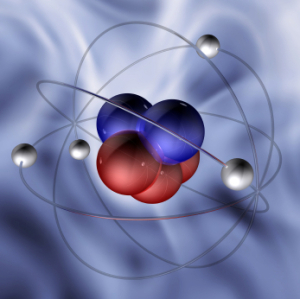by
Brendon Nafziger, DOTmed News Associate Editor | February 01, 2010

Atomic-level research
informs medical technology
investigations in the UK
A compact heart scanner that reads magnetic fields could help paramedics or ER doctors quickly diagnose heart conditions.
Developed by researchers at the University of Leeds in Leeds, UK as a byproduct of their work in quantum mechanics, the machine, a small, portable magnetometer, works like a magnetocardiogram (MCG). Its extremely sensitive sensor detects changes in magnetic fields produced by nerves and blood flow in the heart that can indicate heart disease.
But unlike current MCG machines, which are complex, expensive, room-sized behemoths, this magnetometer is quite small, and can be shunted around on a cart, according to Ben Varcoe, one of the developers of the device and a professor of quantum information at Leeds.



Ad Statistics
Times Displayed: 2585
Times Visited: 12 Fast-moving cardiac structures have a big impact on imaging. Fujifilm’s SCENARIA View premium performance CT brings solutions to address motion in Coronary CTA while delivering unique dose saving and workflow increasing benefits.
Although MCGs are more powerful, because of its size and ease-of-use, this magnetometer could be used by paramedics, nurses or emergency room doctors.
"We didn't envisage replacing a full-blown, installed MCG," Varcoe tells DOTmed News. "We sort of thought it's a niche application -- where it would be useful is in rapid testing."
DISEASES
The device has only so far been used in simulated experiments, and not on humans or animals. But Varcoe believes it could have multiple applications in cardiology, especially in detecting heart rhythm irregularities.
"A really good application, one that I think everybody agrees is arrhythmia. Because [in] arrhythmia you're looking for current loops, [which] produce strong magnetic fields," he says.
It could also help detect ischemias, nodes where blood-flow to the heart is impeded, although the use here is more controversial. Varcoe says, to date, evidence in this area isn't conclusive.
But the heart isn't the only area where it could work -- it could also help diagnose problems in the brain, such as epilepsy; and even the spine.
"I think what you're looking for is somewhere that has a lot of nerve activity, because then you get lots of ion flow," he says.
RESEARCH HISTORY
Research came out of experiments to solve one of the outstanding mysteries of quantum mechanics: how quantum-level effects, such as something existing in two states at the same time, work at the atomic level but seemingly not at the macro-level.
In essence, Varcoe and his team wanted to see how big something has to be before it could largely be explained by classical physics.
To do this, they sought to construct an object by means of a maser, a laser made of microwave beams. This "one-atom" maser shoots out atoms one at a time. The researchers then try to see, to simplify things a bit, at what point the structure, as it grows, moves from the quantum level to the classical one.

